#1830s waistcoat
Explore tagged Tumblr posts
Text
hey guys quick question, how the fuCK do you stitch a shawl collar
the physics are evading me and i am Frustrated
#1830s#1830s waistcoat#1830s fashion#les mis#les miserables#historical costuming#historical fashion#costume design#fashion history#historical clothing
32 notes
·
View notes
Photo

Evening waistcoat, 1838
670 notes
·
View notes
Text
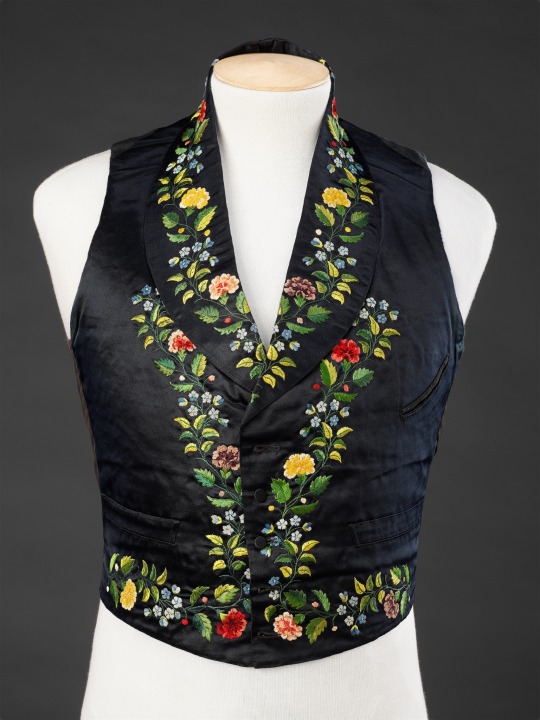
Waistcoat
c. 1830s
Silk satin, embroidered with silk and chenille thread
The John Bright Collection
#embroidery#19th century fashion#1800s fashion#historic fashion#history of fashion#fashion history#historical fashion#vintage#1830s#1830s fashion#fashion#waistcoat#frostedmagnolias
1K notes
·
View notes
Text



Happy Waistcoat Wednesday!
Posting the waistcoat from my previous post in more detail.
321 notes
·
View notes
Text

Men's double-breasted waistcoat, c. 1835-1845. Silk, lined in cotton, backed with silk twill, with detail of rose design:
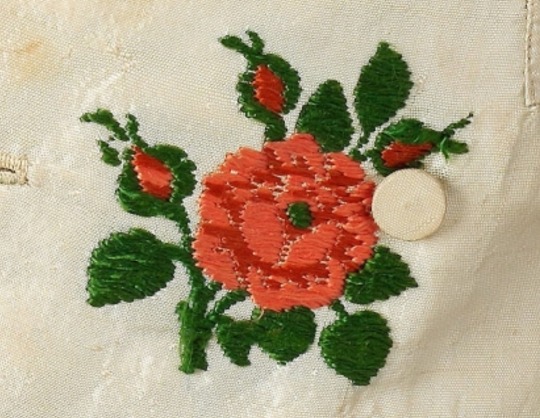
The John Bright Collection notes that "The back is adjusted with a tape threaded through three pairs of metal eyelets on tabs. These metal eyelets, patented in the mid 1820s, were a great improvement on the stitched eyelets that preceded them, being able to take greater strain."
#Eighteen-Thirties Thursday#1830s#1840s#waistcoat#romantic era#fashion history#historical men's fashion#men's fashion#fashion#dress history#extant#early victorian era
1K notes
·
View notes
Text
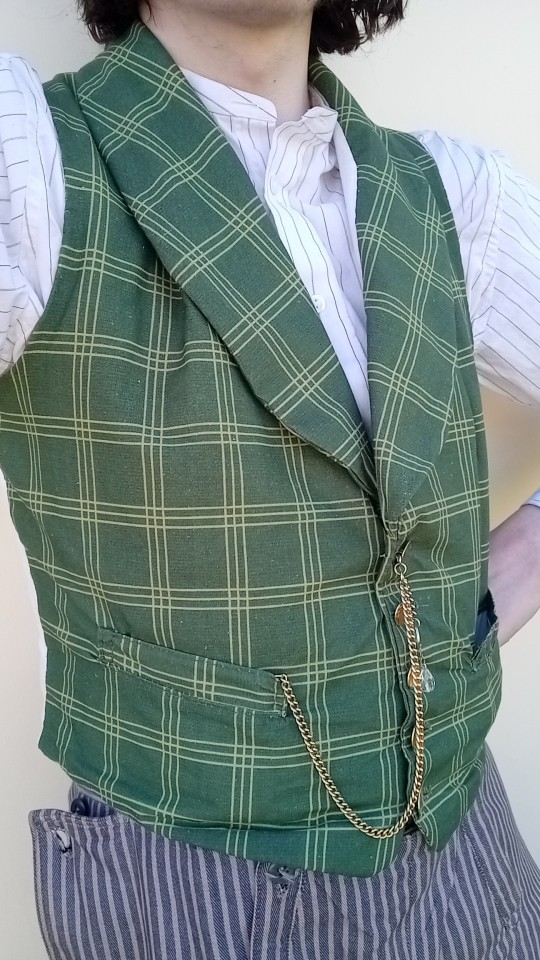
the waistcoat I mentioned in my last sewing projects post! since this has a lot more moving parts and involved some more complex work than the shirts, this was something of a practice exercise, so I did it with a kinda cheap print from a quilting fabrics store. since I had a lot of fun with this I plan to make more in blue and red/gold fabrics that I have, which will hopefully, unlike the print, not leave little white marks everywhere a needle pokes through.
big note for next time is to try and pay more attention to the pocket welts (the little strips that cover the opening), since the pattern doesn't quite match up on either of them & the attachment is a bit shoddy.
...but a very exciting note for next time, or the time after, whenever I use the red/gold fabric, is that I will be using these:

these brass buttons were dated to the late 1830s by the antiques store I bought them at (a cursory Google suggests that button enthusiasts concur.) there are seven in total, which is a couple more than I need for the front closure, so I might see about making that one double-breasted and keep the seventh around for a spare or memento or what have you. hang it off my watch chain maybe.
also, it's a bit too dark to get a good image of it right now, but soon I'll have a picture to share of my "new" sewing machine! I mostly plan to use it for seams and other concealable structural elements--hand finishing is too much fun & provides too neat of a finish for me to give it up.
#sewing projects#historical fashion#the pattern is Black Snail Patterns' c. 1830 waistcoat if you're interested!#also re: the other clothes in the 1st photo: the shirt is one I bought & the pants are loaned. nothing else exciting today unfortunately#though the watch (not pictured) on the end of the chain (pictured) is mine & it's pretty cool. maybe i'll post a photo of that tomorrow
78 notes
·
View notes
Text



Les mis doodles from MONTHS ago
#i'm currently making a 1830 waistcoat#and lemme tell you#seewing actual garments make you draw shit so much better#I KNOW WHERE STUFF GO HOW STUFF IS MADR#like i made a 1830 shirt also bc im gonna cosplay every single les ami#and now i know how the fuc they are built#les mis#les mis fanart#les miserables fanart#les miserables#enjolras#enjolras fanart#grantaire#Grantaire fanart#combeferre#combeferre fanart#my trashy art#victor hughoe art
197 notes
·
View notes
Photo


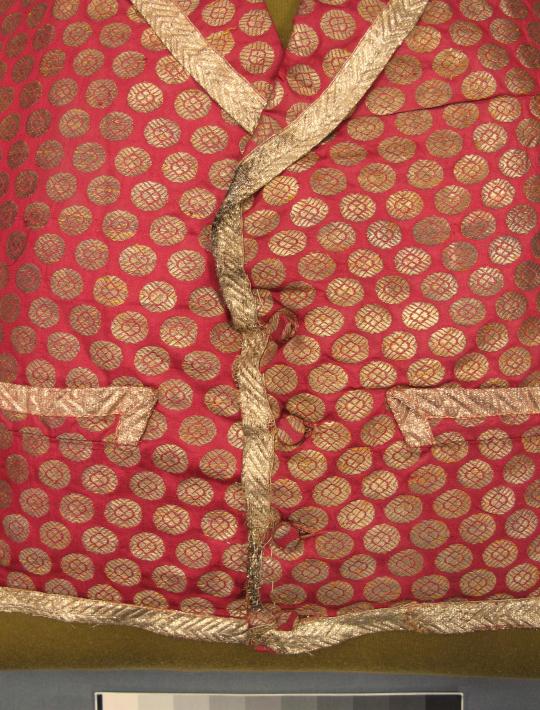



Court Suit
1830s
India
Royal Ontario Museum (Object number: 2021.29.1.1-3)
#court suit#fashion history#historical fashion#1830s#menswear#mensfashion#suit#19th century#india#indian fashion#up close#silk#orange#red#gold#tailcoat#vest#waistcoat#pants#trousers#royal ontario museum
275 notes
·
View notes
Text




LES MIS LETTERS IN ADAPTATION - A Providential Peep-Hole, LM 3.8.5 (Les Miserables 1925)
The wall was a thin layer of plaster upheld by lathes and beams, and, as the reader had just learned, it allowed the sound of voices and words to be clearly distinguished. Only a man as dreamy as Marius could have failed to perceive this long before. There was no paper pasted on the wall, either on the side of the Jondrettes or on that of Marius; the coarse construction was visible in its nakedness. Marius examined the partition, almost unconsciously; sometimes reverie examines, observes, and scrutinizes as thought would. All at once he sprang up; he had just perceived, near the top, close to the ceiling, a triangular hole, which resulted from the space between three lathes. The plaster which should have filled this cavity was missing, and by mounting on the commode, a view could be had through this aperture into the Jondrettes’ attic. Commiseration has, and should have, its curiosity. This aperture formed a sort of peep-hole. It is permissible to gaze at misfortune like a traitor in order to succor it. “Let us get some little idea of what these people are like,” thought Marius, “and in what condition they are.” He climbed upon the commode, put his eye to the crevice, and looked.
#Les Mis Letters#Les Mis#Les Miserables#Les Mis 1925#Les Miserables 1925#Marius#Marius Pontmercy#lesmisedit#lesmiserablesedit#lesmiserables1925edit#THAT WAISTCOAT#THOSE PANTS#THOSE PERFECT 1830s PANTS#pureanonedits#Les Mis Letters in Adaptation
33 notes
·
View notes
Text
That reddit post didn't add credit, but these are in the Hopkins collection, and these pictures appear to have been scanned from the book "Waistcoats: from the Hopkins Collection 1720-1950".


I highly recommend that book to anyone who's as obsessed with historical waistcoats as I am, it has soooo many good closeup pictures. (Not one I'd suggest getting if you're just starting out and need more useful sewing & patterning books though.)
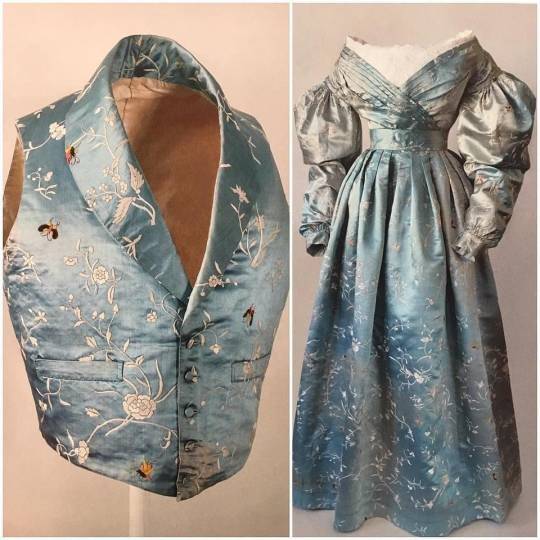
Man's waistcoat and woman's dress from ca. 1830-35, both made from the same fabric which is thought to be embroidered Chinese silk satin imported to Europe, embroidered with white flowers and multi coloured butterflies.
10K notes
·
View notes
Text
AYAYYAYAYAYYAAYAAAY I GOT SOME NEW FABRICS SO I CAN START WORK ON MY UPDATED 1830S WAISTCOAT!!!!
#i'm also making a modified pair of braces that I can wear with my distinctly 2020 dress pants#dude i'm so excited#sewing#historical costuming#historical fashion#19th century fashion#1800s#1830s waistcoat#1830s fashion#les mierables#les mis
44 notes
·
View notes
Photo

Waistcoat, 1835-55
#historical fashion#waistcoats#menswear#paisley#fabric prints#jacquard#buttons#era: 1800s#1830s#1840s#1850s#victorian
17 notes
·
View notes
Text

Men's vest or gilet persan with shawl collar, completely embroidered with multicolored floral motifs interrupted by oblique and straight stripes, c. 1830-1840 (Rijksmuseum). Detail below.

Men's 1837 fashion plate with embroidered or printed fabric waistcoat with shawl collar (Met Collection).

#Eighteen-Thirties Thursday#1830s#fashion#romantic era#fashion history#fashion plate#1837#historical men’s fashion#men's fashion#embroidery#waistcoat#vest#textiles
196 notes
·
View notes
Text
please please please make it normal for men to wear waistcoats again
Disclaimer: I know that some folks continue to wear some or all of these items in the 21st century. This is more asking what you wish would become fashionable again so you could wear it without receiving any second glances from strangers
#im sick of being the only one ever to wear my bee-print 1830s waistcoat casually with a white polo shirt underneath and jeans#like#please#bring waistcoats back#but ALSO. sleeves#the most stupid ass big large sleeves you have ever seen in yuor entire life#i WANT linen undershirts back as well#they actually slay
4K notes
·
View notes
Text
The costume details in Good Omens never cease to amaze me
I was working on cosplay research and looked up 'men's dress shirt rounded collar' since I noticed Aziraphale's blue dress shirt collar is rounded, not pointed:
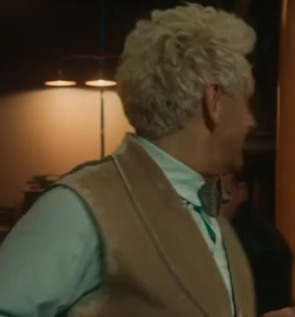
So it turns out...
"The rounded collar was part of Eton College‘s dress code beginning in the mid-1800s. Because men wanted to be perceived as belonging to this exclusive club, the rounded, or “club” collar was copied by the masses." (Source)
Between that and the fact that Aziraphale's waistcoat, from what I can find, most closely matches shawl collar waistcoat designs from the 1830s, and his waistcoat at Saint James Park in 1862 is the first one we see him wear that most closely resembles his 'modern day' one, it's safe to say our lad is stuck at the start of the 19th century.
Which COULD be hilarious given undergarment styles of the time:
Through the late 19th century - union suits! Lovely for cold London winters.
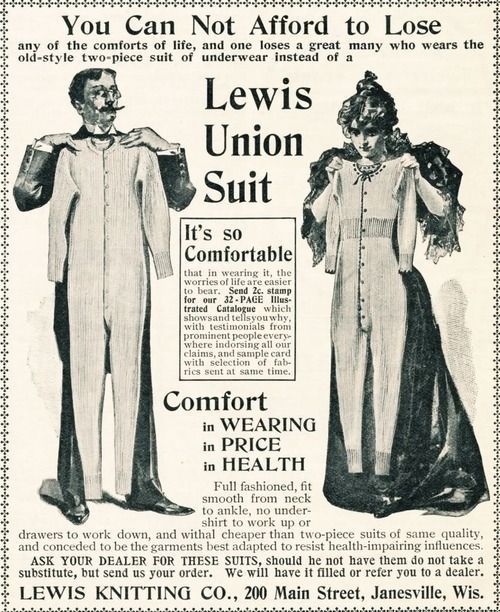
1907...
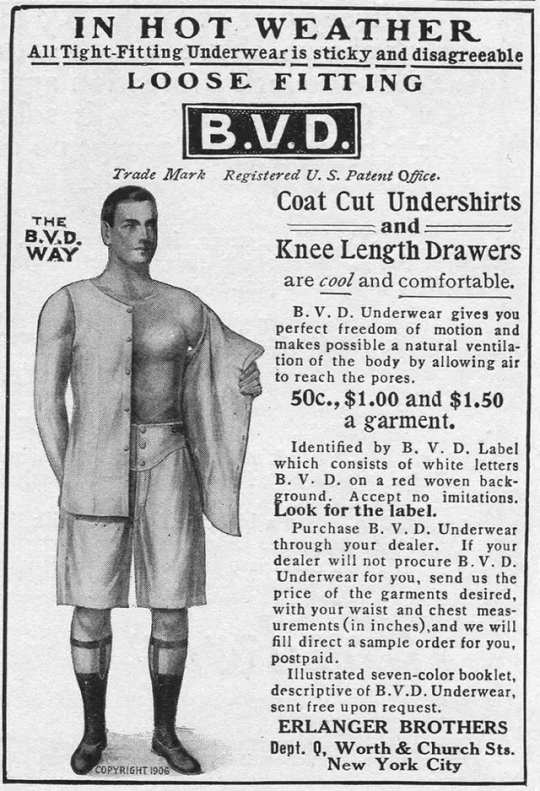
However, I suspect 1940s style to be most likely, as it seems to be what he emulated when pretending to be Crowley at the end of Season 1.
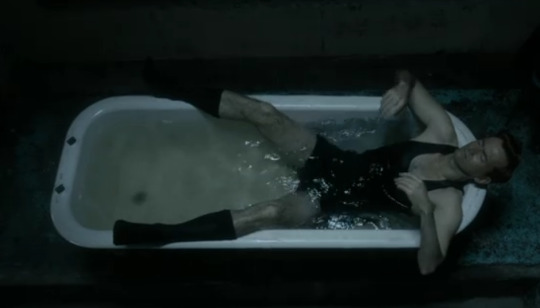
1940s undergarments:

Anyway this has been your fashion history dork brain dump LOL
#fashion history#historical fashion#good omens#good omens costumes#good omens cosplay#aziraphale#crowley#IneffabLeigh's Meta Tag
447 notes
·
View notes
Text
Chopin’s Wardrobe — What I Wore
Today I would like to share with you all the manner in which I dressed. It is interesting to see how fashions have changed over the course of 200 years. Some might say style has slipped… Anyway! Here are some details on my wardrobe:
My Suit
I liked to wear sober colours: black, mauve, blue… and especially grey. For instance, I once asked Julian Fontana to have made for me a pair of dark grey winter trousers, without a belt, which were smooth and stretchy.

Grey trousers, 1840.
At a concert in Glasgow, a pupil recalled that I had worn a pale grey suit. Which included a frock-coat of identical tint and texture.


(Left) Frock coat, 1840. (Right) Frock coat and trousers, 1852.
Under my suit, I would wear a modest waistcoat in a fabric such as a black velvet with a tiny inconspicuous pattern, something very quiet and elegant.



(Left) Provençal waistcoat with mauve silk seedlings, 1860. (Centre) Waistcoat with floral pattern, 1838. (Right) Striped waistcoat, 1850-70.
My preferred shirts were ones made of cambric or batiste fabric. They had small mother-of-pearl buttons, two breast-pockets, and could be bought for 14 francs.

For my cravat, I would wear muted colours during the day. Usually, I would tie it in a bow. However, when performing in a formal setting, I would wear a broad, white silk cravat.


Winter Clothes
To keep warm in the winter months, I wore a thick redingote or over-frock coat, as can be seen in this daguerreotype of myself from 1849.




(Left) Wool coat, 1840. (Centre) Winter costume. Paul Gavarni, 1846. (Right) Frock coat. Wool, trimmed with silk velvet. 1820-1830.
At one point, my sickness rendered me so sensitive to the cold that I wore three flannels under my trousers.

Underpants, mid-nineteenth century.
Accessories
Because I had small feet, I often found shoes uncomfortable. I mourned the day, Moos, my shoemaker died. No one made my shoes like him.

1840s men’s shoes.
On my head, I would always have my hair curled, and, when outdoors, I would wear a top hat. I bought my hats from Dupont’s because he made them lightweight. They were originally made of beaver felt but, by my later life, they were made of silk plush.


(Left) Top hat made of beaver felt, 1830s. (Right) Top hat made of silk plush, 1850.
My outfit was only complete with white gloves. Without them one would not be in good taste. Kid gloves were common, but I also liked wearing Swedish (suede) gloves. Always in white.

Evening gloves. 1848.
A pocket handkerchief was also a necessity.

Finally, I had a miniature pocket watch. According to one concert-goer, it was “In shape no bigger than an agate stone, on the forefinger of an alderman.”

Where did I shop?
I bought my top hats from Dupont’s at No 8, rue de Montblanc (the previous name for rue de la Chaussée-d’Antin). I lived on this street myself, both at No 5 (1833-36) and No 38 (1836-38).


(Left) 9, rue de la Chaussée-d’Antin, the fabric shop across the street from the milliners, 1840s. (Right) Rue de la Chaussée-d’Antin, 1858-1878.
My shirts came from No 37 in the Palais Royal galleries, on the theatre side.


(Left) View of the Galerie d'Orléans in the Palais-Royal, 1838. (Right) Jardin du Palais Royal, 1840s.
The white suede gloves could be acquired from À la Corbeille de Fleurs, Houbigant’s shop at No 19, rue du Faubourg Saint-Honoré.


(Left) The corner of rue du Faubourg-Saint-Honoré, 1820-1840. (Right) Faubourg Saint-Honoré, 1814-1885.
There were also many shops along the Grands Boulevards. This is where I got my trousers made by my tailor, Dautremont.


(Left) Boulevard de la Madeleine, 1799. (Right) Boulevard des Capucines, 1830.


Boulevard des Italiens, 1840s (left), 1835 (right).
So…
As you can see, in spite my reputation for being picky and perhaps… prissy, with regard to fashion and furniture, I was far from what was called a dandy. My dress was never over-the-top and nor did I put on the airs that were so pertinent to dandyism. My desire, if anything, was to be refined and respectable. Although, perhaps my efforts to do so were occasionally cause for frenzy or distraction.
#1830s#1840s#historical men's fashion#romantic era#frycek’s fashion tips#biography#frédéric chopin#fashion history
127 notes
·
View notes